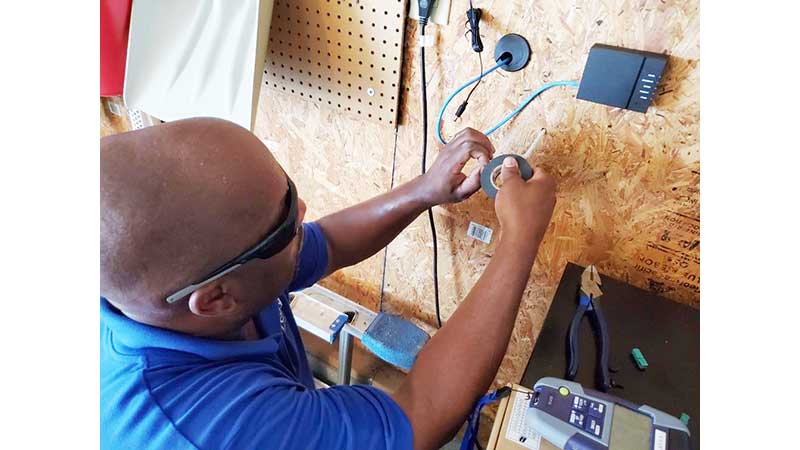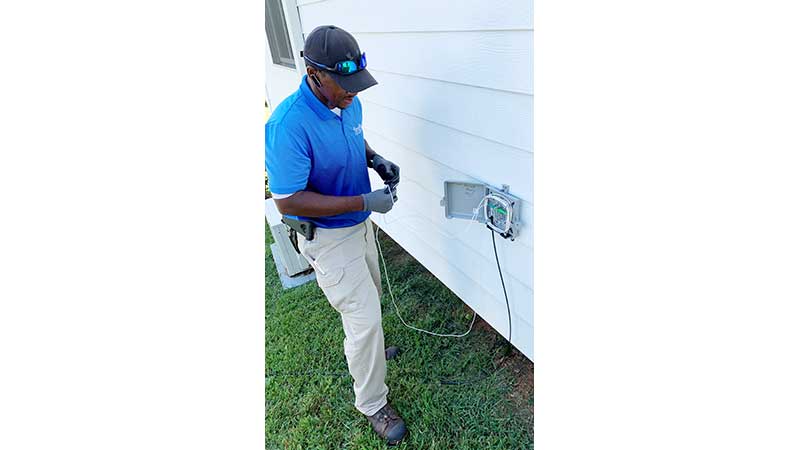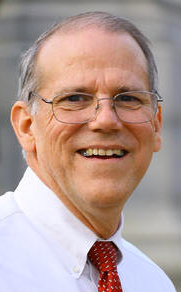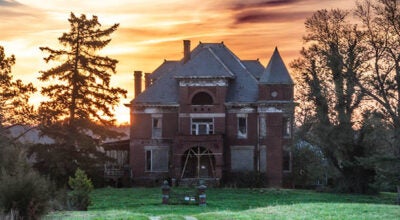Imagine Farmville — Future of broadband
Published 2:55 am Thursday, July 2, 2020
|
Getting your Trinity Audio player ready...
|
This edition of Imagine Farmville will examine the state of broadband in the area while also giving insight on ways it can be improved and what will be necessary to make that growth a reality.
With the impact of the COVID-19 pandemic, having high-speed internet is more important than ever. Professionals and students of all ages have had to make use of the internet at home to a degree they may have never previously imagined.
Therefore, it is also more important than ever that people have access to this high-speed internet.
Unfortunately, in particularly rural parts of central Virginia, that access is simply not a reality yet.
A variety of families with children in Prince Edward County Public Schools noted having difficulty this past spring participating in Zoom video conferencing sessions with teachers. The sessions were intended to facilitate continued learning and to provide an opportunity for classmates to reconnect and socialize after schools closed to limit the spread of the novel coronavirus.
Megan Hennigan, who has lived in Rice for approximately eight years, has three children in the Prince Edward County school system, ages 8, 9 and 12. She said her family has no internet whatsoever.
“We just kind of use our phones right now,” she said. “We used our phones for Zoom sessions. It’s not really the best, but that’s what we did.”
She affirmed this way of accessing the internet consumes a lot of data.
Hennigan and her family have moved within Rice in the last eight years.
“We’re a mile away from where we were,” she said. “We’ve been at the house we’re at now for about two years, but we tried to get internet at the older house, and it was so hard because there was no internet available out here. I think things have changed a little bit now as far as how you can get internet here — it’s just expensive.”
She said making the internet cheaper would likely help a lot, particularly in terms of a monthly payment.
“I don’t mind paying for the bill, but it’s just when money’s tight or whatever, then you don’t really have extra to (spend) $100 for internet,” she said.
Gary Wood is president and CEO of Central Virginia Electric Cooperative (CVEC) and its wholly owned subsidiary Firefly Fiber Broadband. He shared a story that he said helps give an example of the way fiber broadband issues in rural areas can be solved.
He started by mentioning co-ops that existed back in the 1930s after the Great Depression.
“Part of the New Deal was to try to get electricity into rural areas,” he said. “Cities like Richmond had electricity in the early 1880s, and 50 years later, there was still no electricity in rural areas, in Virginia or anywhere else in the nation. The government decided that capitalism alone would not solve that problem because there wasn’t a lot of money to be made, so they would need to provide government support.”
He noted the government set aside, in that case, zero-interest loans for big companies like Dominion Power, APCO or any others in the U.S. to build into rural areas.
“None of the big companies took that up,” he said. “There was just no money to be made, so they didn’t do it.”
So farmers got together and went to Washington, D.C., and said that if the government had money available to build, they would like to borrow the money and essentially build electric companies themselves, Wood explained.
“And so the Rural Electrification Administration was formed with a lot of government regulation, because they thought, ‘If farmers are going to start an electric company, somebody’s going to get hurt,’” he said. “‘This is dangerous stuff, and they don’t know how to run an electric business.’”
So it became a pretty highly regulated set of not-for-profit utilities, he continued.
“Since you’re using government funding, you couldn’t profit off of it, so any money that was made that would have been profit just goes back to the people who bought the service for the year, and that’s the way the co-op is set up,” he said. “There are no other shareholders, there can’t be — it’s a not-for-profit.
“And it was really the only way to make it work for the rural areas, because you really can’t make money,” he said.
There is simply not enough population density.
“So in the ’30s, co-ops sprung up around the nation,” Wood said. “There are about 900 electric co-ops in the U.S. today. They serve something like over 70% of the land area of the U.S. but only about 10% of the population.”
He said a number of electric co-ops have decided to add on fiber optic cable onto their electric lines and extend broadband internet access in the same areas that they’re providing electric service.
Four co-ops are doing this in Virginia, he said, including CVEC.
“Several others are considering getting into the business of becoming an internet service provider and building fiber,” he said. “And across the nation, as many as 150 or 200 co-ops are looking at whether or not to extend into the internet business.”
He said CVEC made its commitment in late 2017.
“Our board of directors approved an initial year out of a five-year program to start a project that would build fiber across about 4,000 miles of power line and make service available to 37,000 accounts,” he said. “That includes some in Prince Edward, as well as Buckingham, Cumberland, the counties that we serve.”
This decision came with a challenge from the board.
“They also challenged us, the management, to go find grants and outside support that would help offset some of the cost to make it more economically feasible,” he said.
Since there is not much profit to be made in providing broadband to rural areas, Wood emphasized the importance of receiving state and federal grant money.
“Our co-op has been pretty successful,” he said. “We’ve got about $52 million so far in grants, awards, FCC auction awards, which are a little bit like grants except they’re spread over a few years, so different types of outside support.”
He said currently, CVEC is in year two of its buildout.
“We’ve got a little over 3,000 accounts connected in our broadband subsidiary,” he said. “Within the next couple months, we will build out of our Pamplin substation, which covers a little piece of Prince Edward County, as well as a little bit of Appomattox and some of Buckingham. We’ll make service available to the folks who are CVEC members down in that area.”
He said the goal is to shorten the five-year plan, and he noted that CVEC’s subsidiary is not limited to the same service territory as the co-op, so it could expand into other territories in the future that could include Farmville and more of Prince Edward County. To make this possible, though, more money will be needed from grants.
Wood also spoke to the concern Hennigan raised regarding exorbitant monthly fees.
“One of the goals for getting this extra outside funding is we believe you’ve got to make this affordable,” he said. “We think you’ve got to have an entry-level package that’s under $50 a month, with $49.99 for a 100-megabit-per-second service. And then we have gigabit service that’s $79.99.”
State Sen. Frank Ruff Jr., who serves the nearby 15th District, said the state government is essentially doing what it can to help expand rural broadband service.
“The last two state budgets have been pretty aggressive in trying to do about $50 million a year, but the pandemic cuts both ways,” he said. “It reduces revenue coming into the state, which means something’s going to be cut, and the decisions will have to be made in August when the governor calls you back into session — which is more important, providing this service or that service? So that may be on the cutting board or it may not. There may be an avenue to expand it and do it faster, but I don’t know where the cash would come from.”
He said some of the Coronavirus Aid, Relief, and Economic Security (CARES) Act money could be used, but only under limited circumstances.
Another avenue for expanding broadband is being explored by entrepreneur Elon Musk.
As the BBC reported earlier this year, Musk’s company SpaceX has launched into space a chain of satellites called Starlink. This chain will become part of a massive network of 12,000 satellites aiming to provide new, higher-speed internet connections worldwide in the future.
“With performance that far surpasses that of traditional satellite internet, and a global network unbounded by ground infrastructure limitations, Starlink will deliver high-speed broadband internet to locations where access has been unreliable, expensive or completely unavailable,” officials stated at Starlink.com. “Starlink is targeting service in the northern U.S. and Canada in 2020, rapidly expanding to near global coverage of the populated world by 2021.”
The Starlink website notes that with four powerful phased array antennas on each satellite, an enormous amount of throughput can be placed and redirected in a short time for an order-of-magnitude lower cost. It is also stated that custom-built in-house navigation sensors tell each satellite its altitude, which helps enable precision placement of broadband throughput.
Wood favors fiber in the long-run, though, when it comes to broadband.
“If you have a couple of professionals working at home, even photography professionals, people with huge files, videographers, they can use that gigabit service and be able to do everything in their rural home that you could do in downtown New York City using business internet, because the gigabit service, it’s cutting edge,” he said. “It’s as good as any internet service in the U.S., or really in the world. That’s part of the reason we think fiber optic is the long-term solution.”









